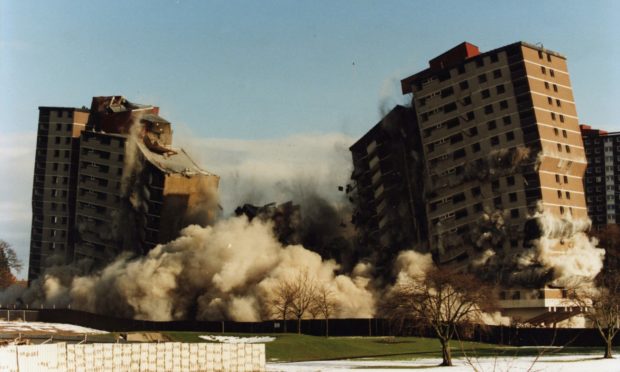Dundee has seen plenty of buildings razed to the ground and new developments rise in their place over the past few decades.
This has been both celebrated and opposed by locals, some seeing the demolitions as forward thinking and improving the city while others are sorry so many of its buildings and iconic landmarks have been reduced to rubble.
Here, we take a look at just some of the demolition work carried out in Dundee streets.
East Railway Station
Dundee’s East Station was originally home of the Dundee and Arbroath Railway but as local lines closed and longer services were transferred to Dundee Station, the East Station was left redundant.
Below, crowds leave the East Station in 1958. 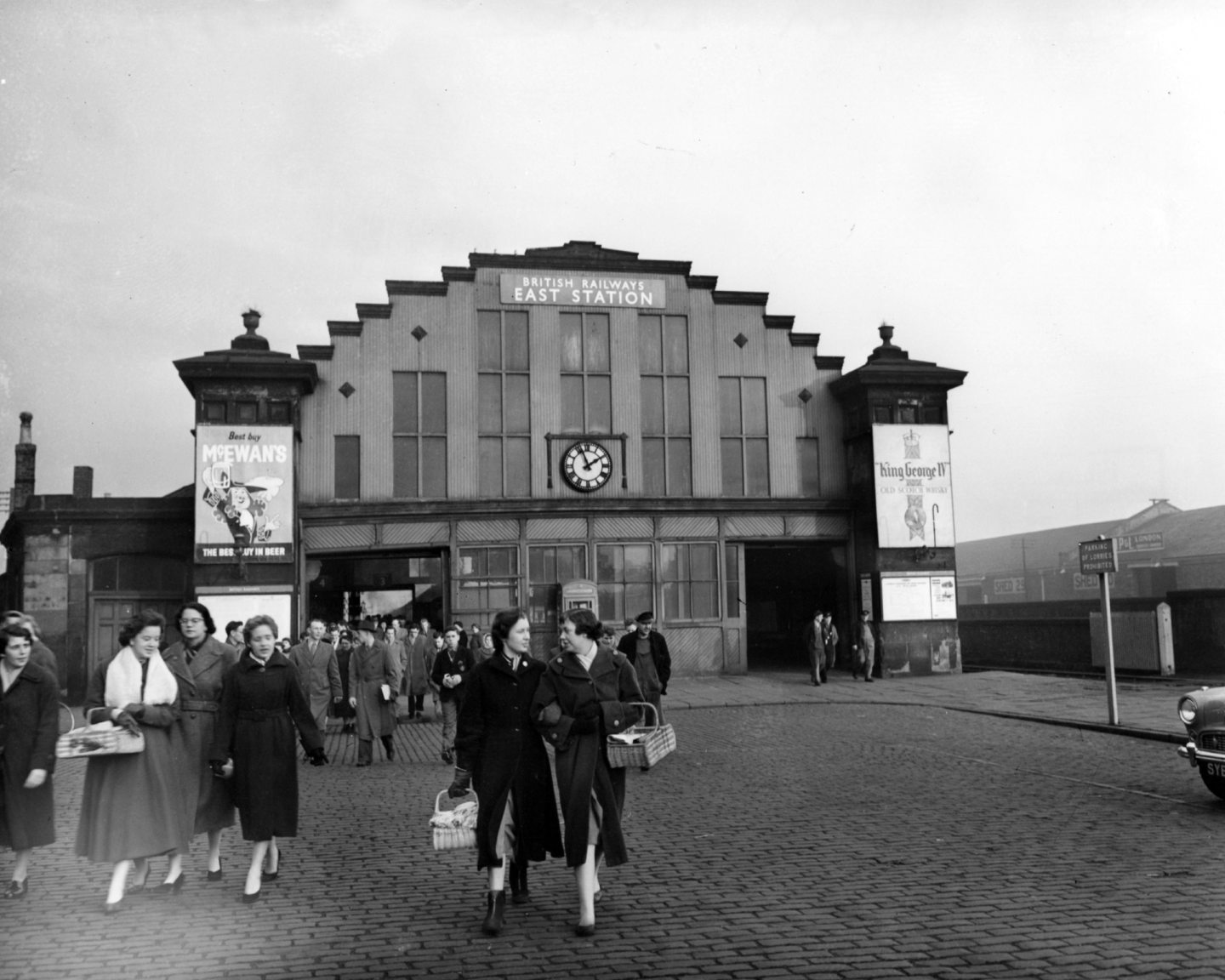
The station originally opened in 1857 and was known as Dundee Dock Street; however, a year later its name was changed and until its closure in 1959 it was known as the East Station.
The building stood for a number of years before being reduced to rubble, as can be seen below with the remains of the demolished station pictured in January 1964.
Through the rubble you can see a building on the corner of Candle Lane and the spire at St Paul’s Cathedral.
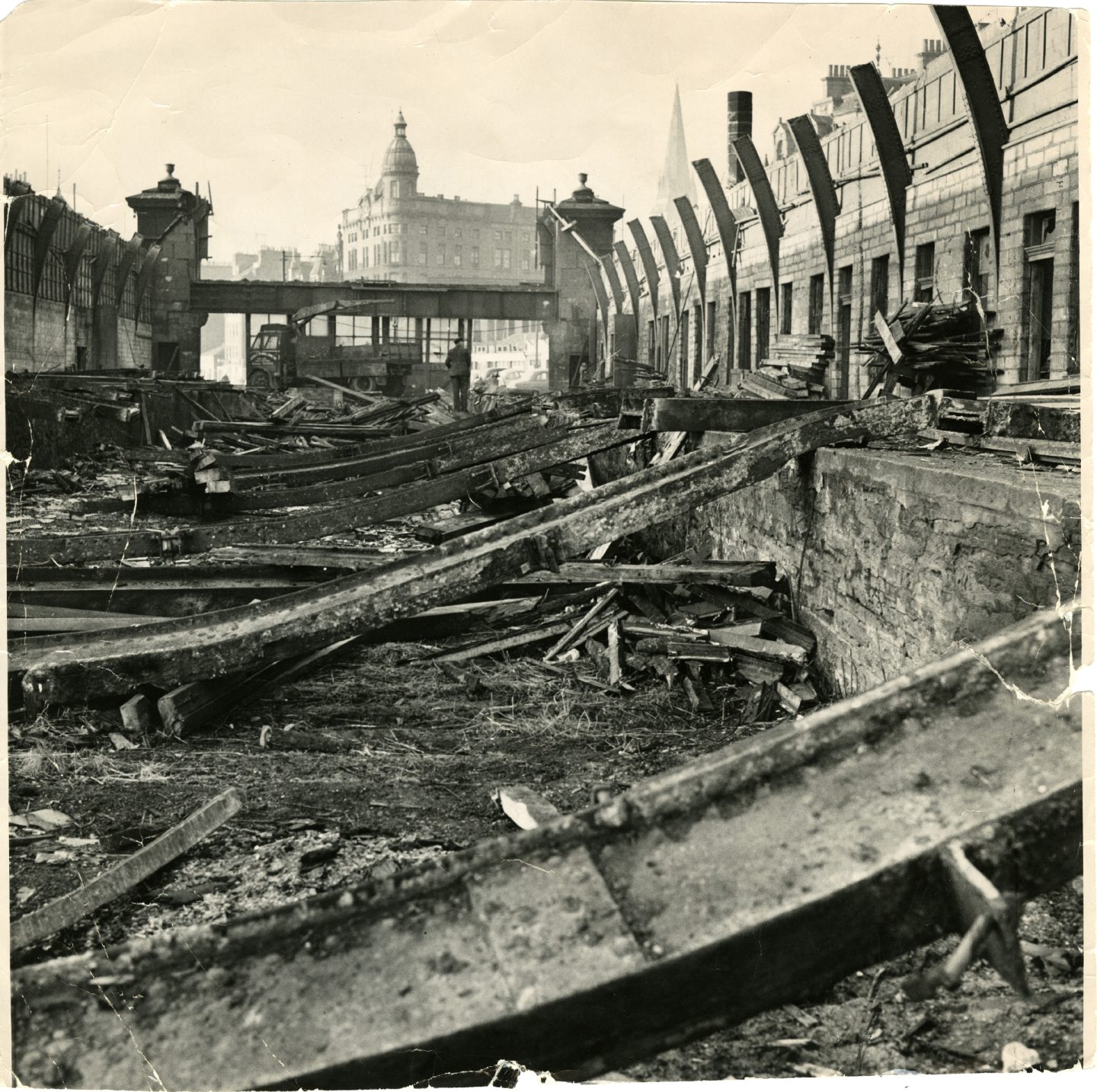
The Swan Tavern
The Swan Tavern stood at the junction of the Overgate and Barrack Street and was a pub much loved by many in the early ’60s.
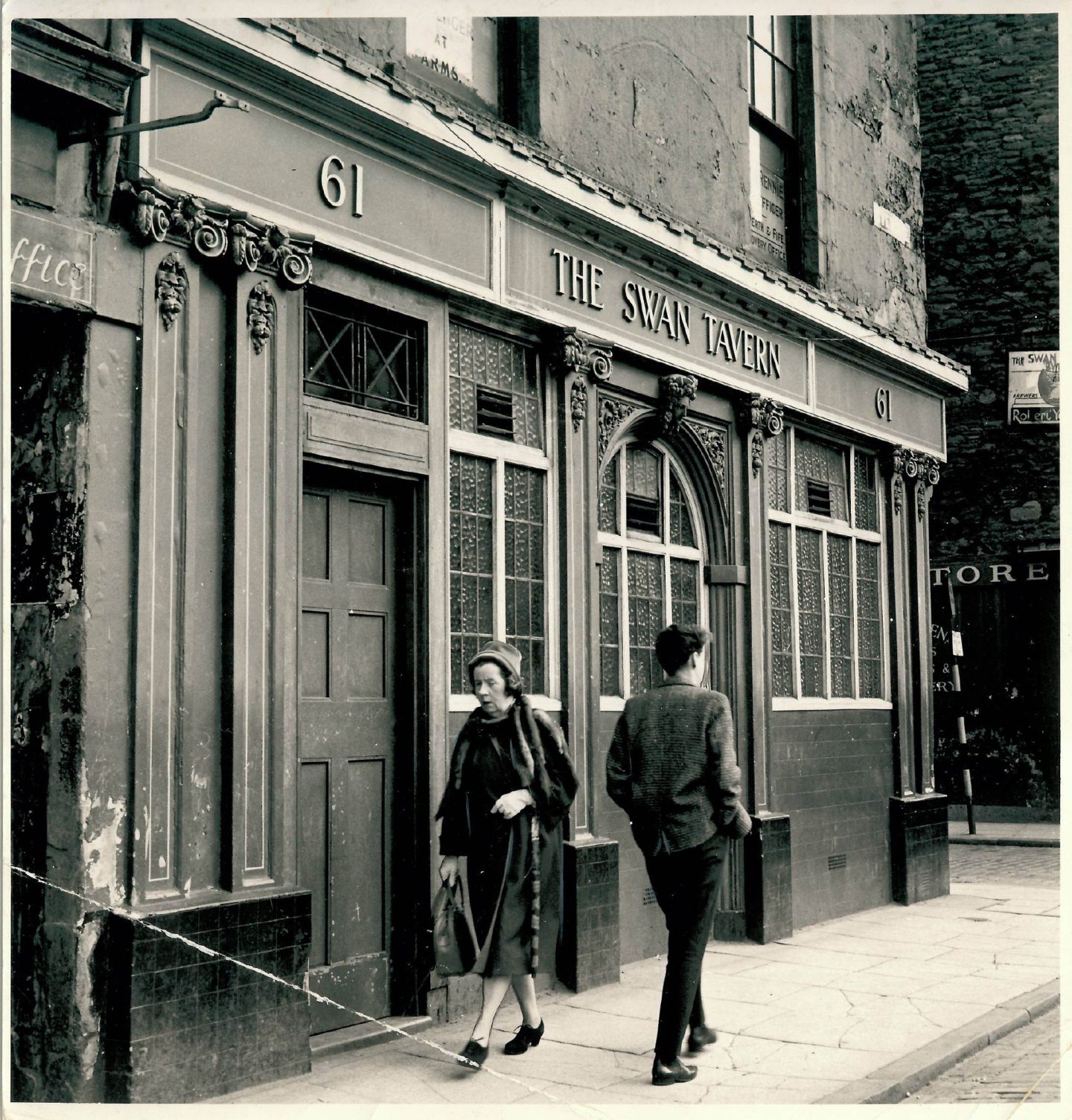
However, with the regeneration of the surrounding Overgate area, punters were forced to say goodbye to the Swan in December 1963.
Little is left standing as The Swan Tavern is seen mid-demolition, below, with the Steeple Church in the background. 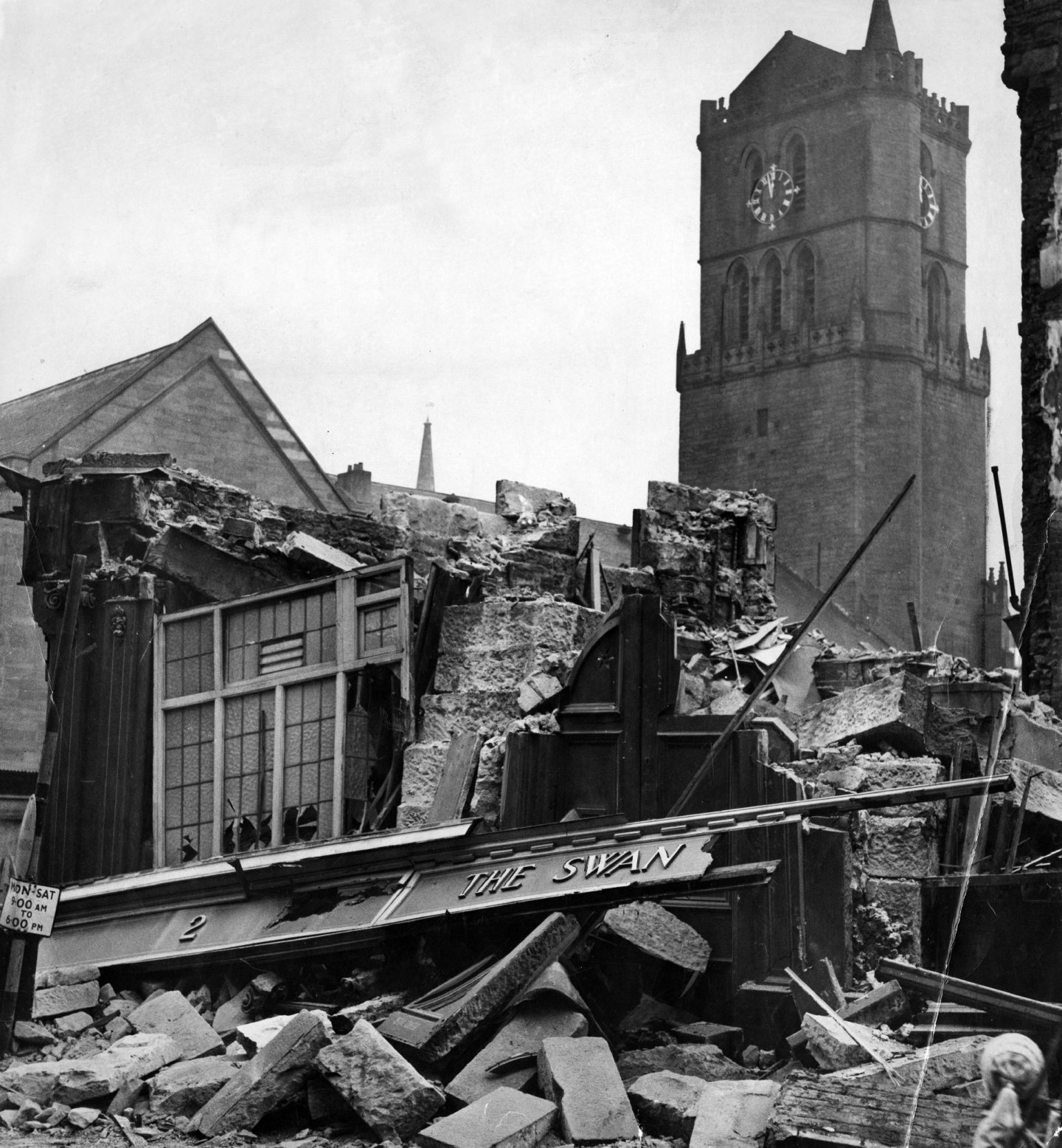
Tally Street
Another area that was affected by the Overgate updates was Tally Street, which once intersected the Overgate.
The street can be seen here alongside the High Street in an undated image from the early 20th Century.
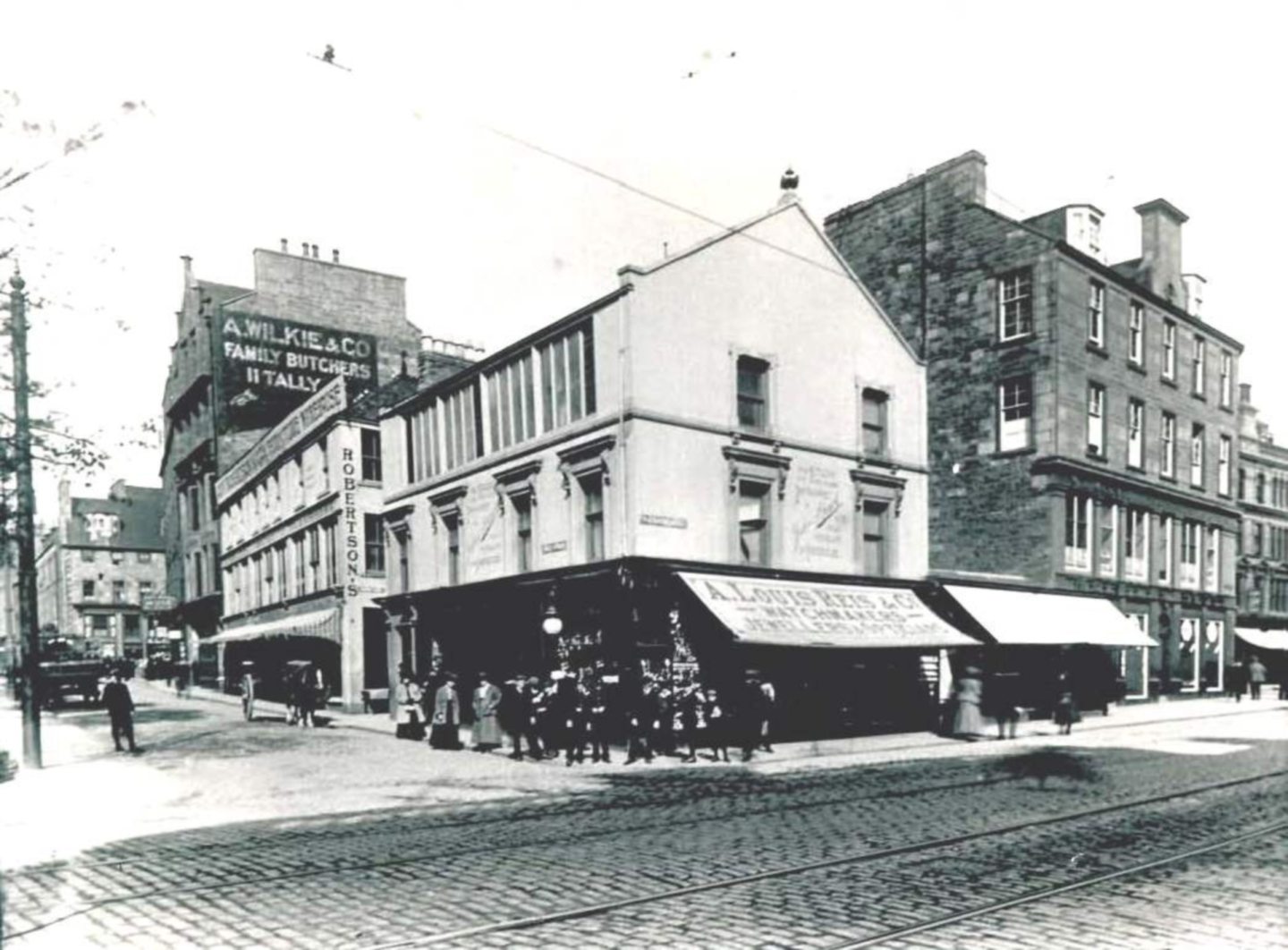
As the new open air shopping mall was planned for the city centre, there was no room for much of Tally Street and so many of the old buildings and shops were razed to the ground, as can be seen below, in May 1966, as diggers clear some of the rubble from the area.
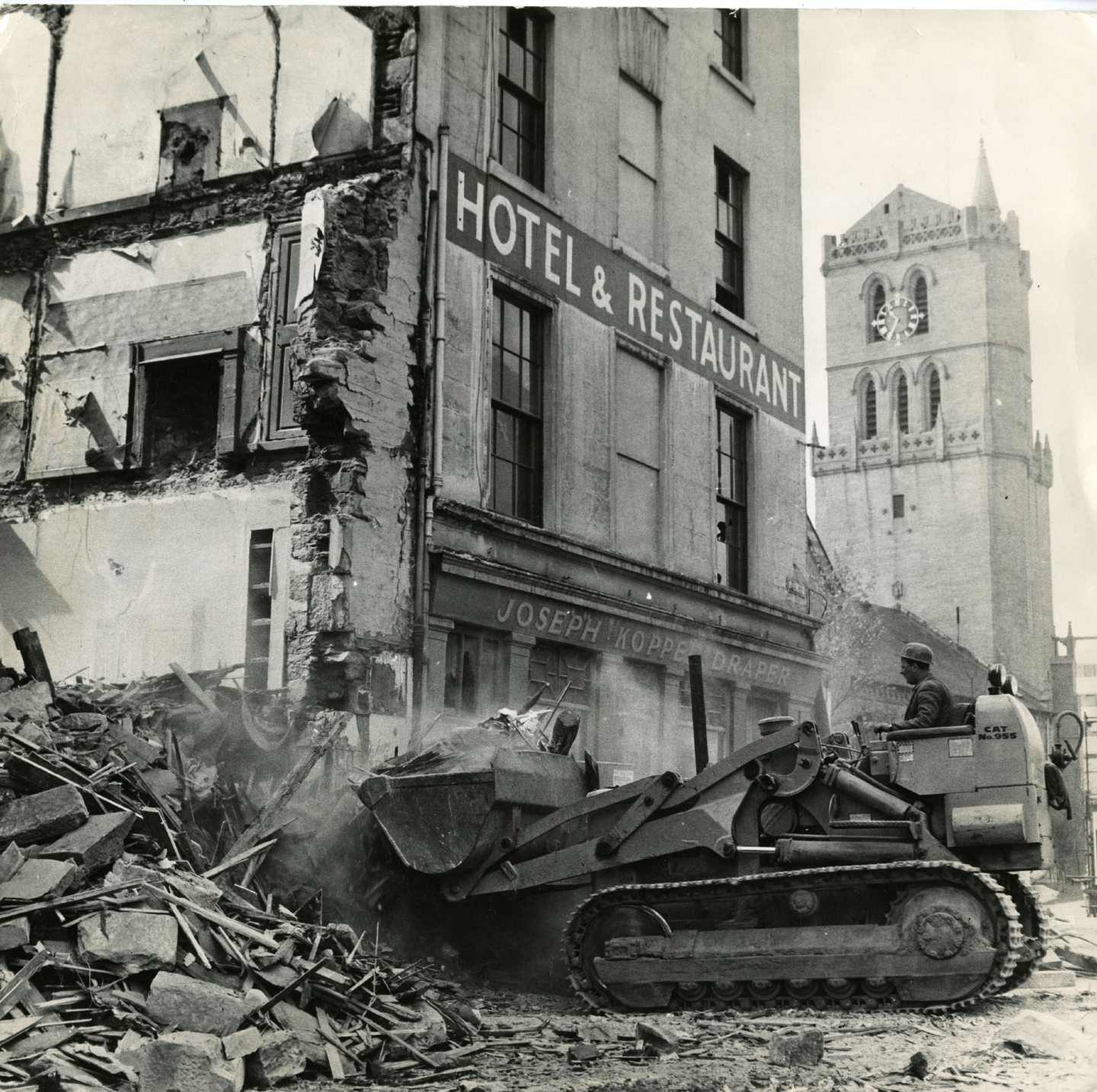
Empress Ballroom
The lively venue that was the site of many couples first meeting – and, often, a first kiss – was opened in 1938 in Dock Street by James Duncan, who had also opened the Palais, on South Tay Street.
Commonly known as The Tonk, the Empress Ballroom could hold up to 400 couples, which was much-needed space as wartime Dundee’s dancing scene thrived as foreign soldiers made use of the city’s many dance halls.
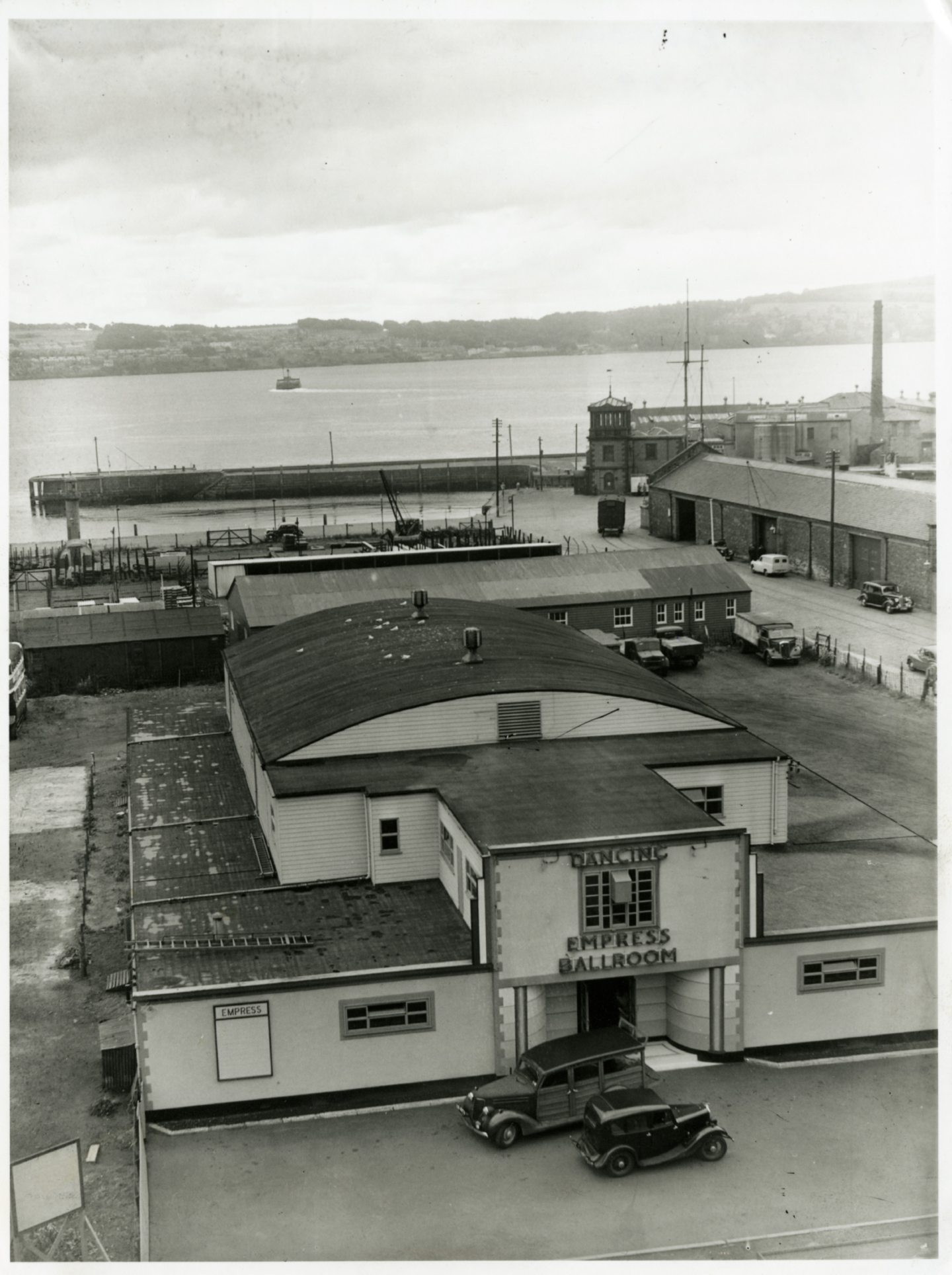
During the ’60s, though, times were changing and space was needed at Dundee’s docks as construction began on the Tay Road Bridge, with the Empress Ballroom being forfeited to make way for the bridge’s off roads.
In the image below taken in March 1963 during the hall’s demolition, another casualty of the bridge construction, the Royal Arch, can be seen still standing in the background.
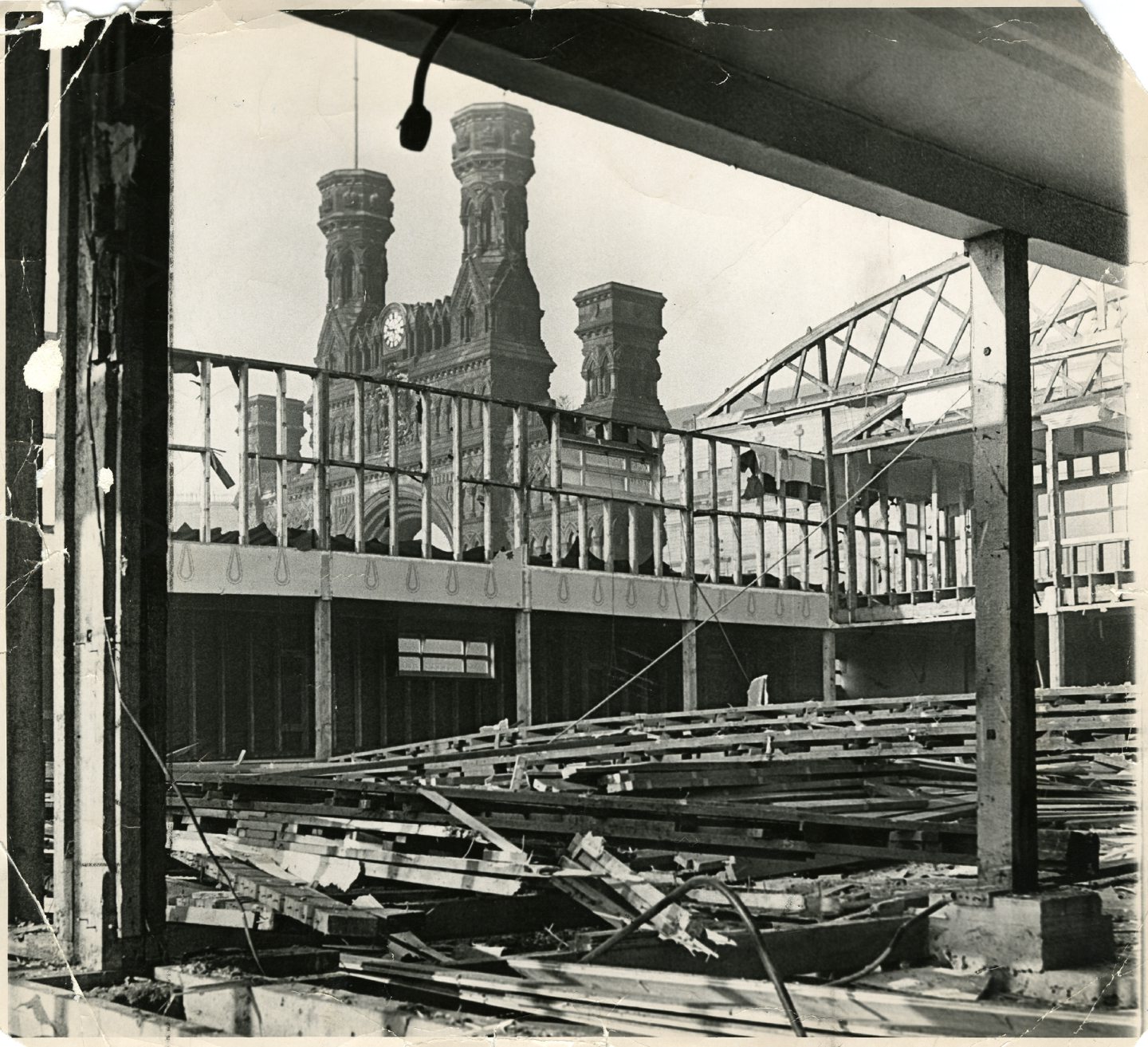
Keiller Factory
The Keiller factory on Albert Square was one of the largest in Scotland, employing around 600 people when it opened in 1870.
Operations were closed at the Albert Square factory in 1947, although much of the production had already been moved to new premises on Mains Loan in 1928.
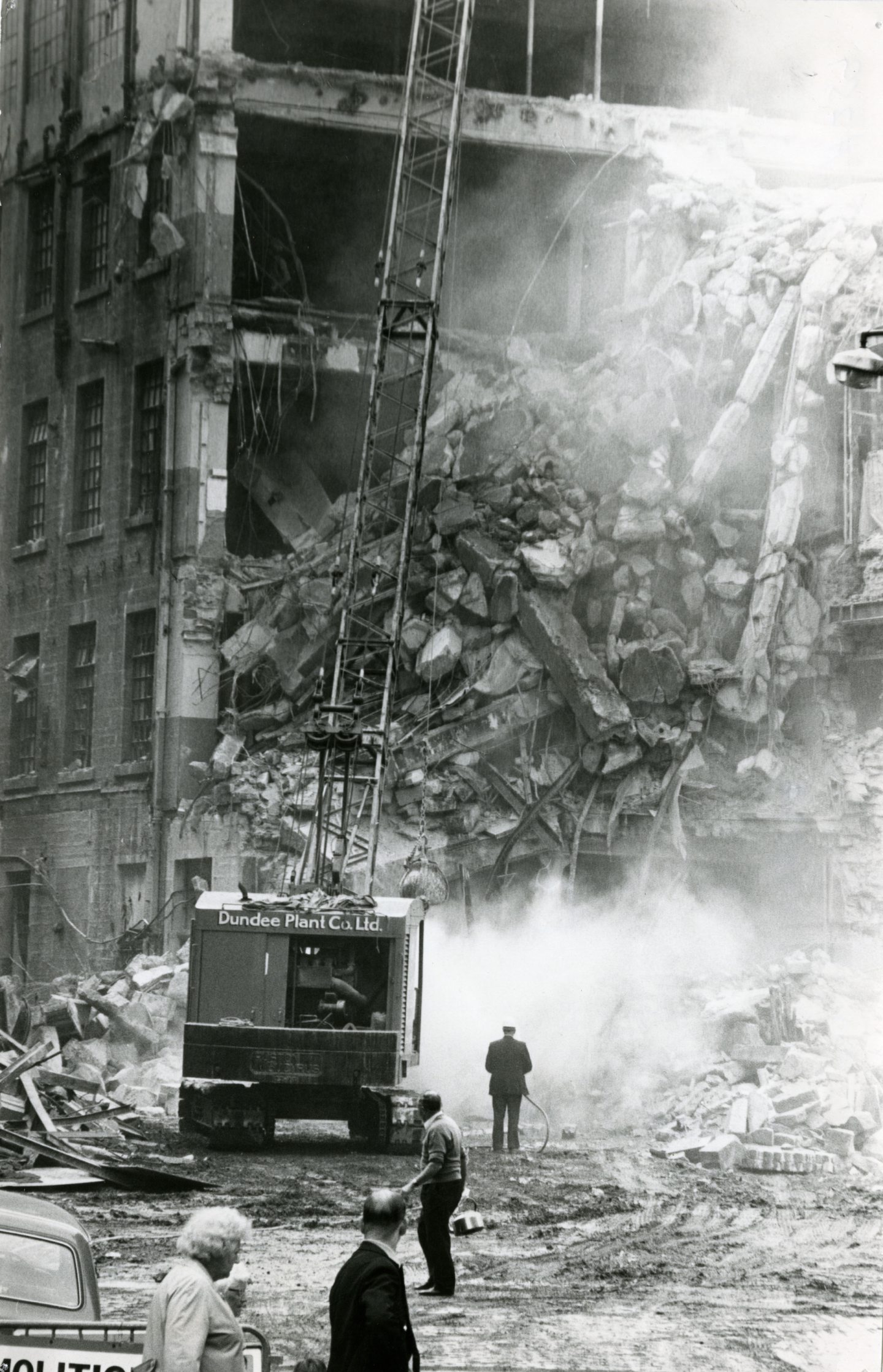
In 1972 time was finally up for the building and it was demolished to make room for the Keiller Centre.
The demolition was a huge operation due to the building being located in the middle of buildings which were to be kept in place.
Despite such challenges, the factory was demolished ahead of schedule, allowing the construction of the new shopping mall.
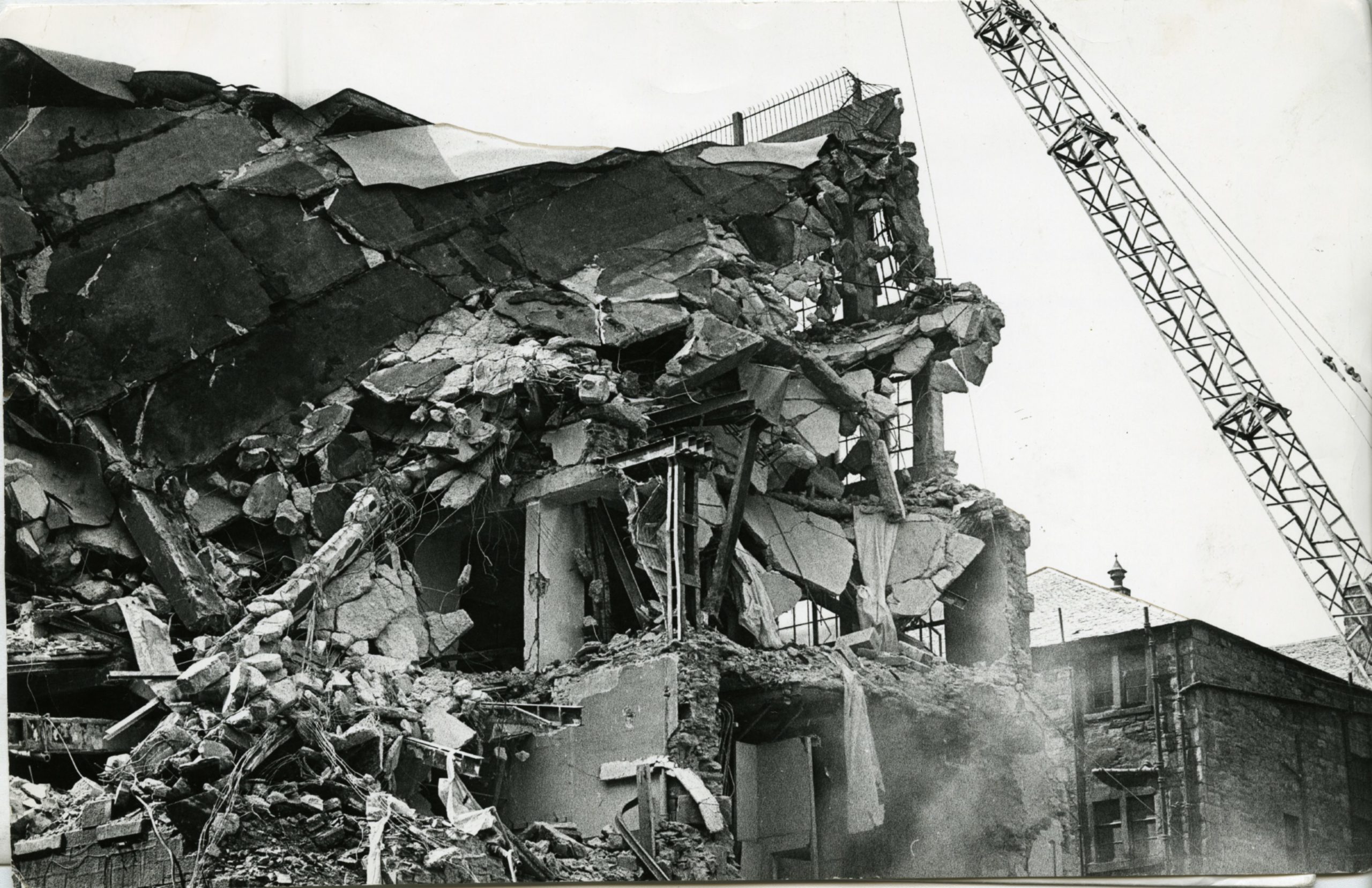
Ardler multis
The multis were built between 1964-1966, comprising 1,788 dwellings, and described as “perhaps Britain’s most uncompromising and monumental example of the ‘Zeilenbau’ pattern of multi-storey blocks in parallel rows”.
Less than 30 years since construction began, demolition began on the Ardler multis in 1993 – with the first of the blocks gone.
Below, locals watch a football match at pitches next to the Ardler Multis in 1991.
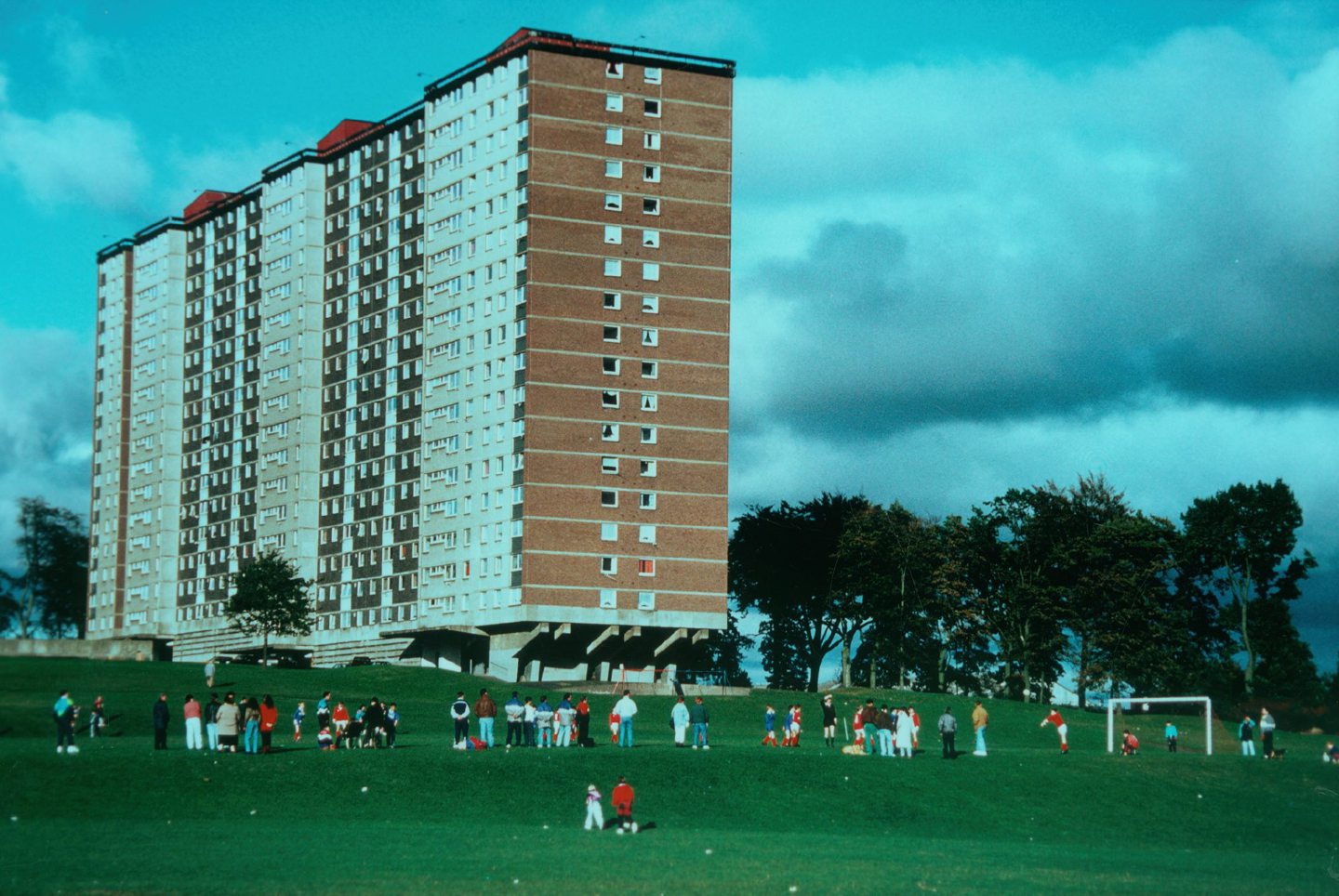
Most of the others followed in 1996, when a crowd of around 15,000 gathered to watch 34,000 tons of concrete being reduced to rubble in just 12 seconds.
The final block, Carnoustie Court, was demolished in 2007.
VIDEO: Former residents bid sad farewell to Blackness Road flats as demolition continues
